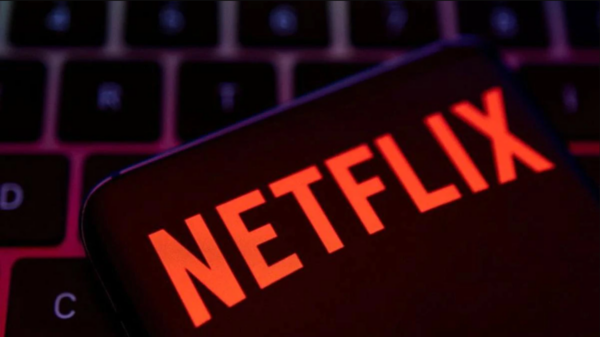The outlook for Netflix NFLX –2.18%’s first-quarter earnings report, due Tuesday after the market close, is somewhat unclear.
The company continues to dominate the streaming video market. However, it is struggling to demonstrate meaningful growth due to a sluggish economy, increasing competition, and an apparently saturated U.S. streaming market.
Netflix (ticker: NFLX) projects a quarterly revenue of $8.2 billion, up 4% year-over-year. This compares to growth of 2% in the December quarter and 16% in the same period one year prior. Netflix anticipates earnings per share of $2.82, up from $1.33 a year ago.

Wall Street expects $8.2 billion in revenue and $2.86 per share in profits. Analysts expect 233 million subscribers, up 2.26 million.
Wall Street anticipates the company to accelerate during the June quarter. Consensus estimates revenue of $8.5 billion, up 8% from the previous year, with earnings per share of $3.07 and net subscriber additions of 3.7 million.
This will be the first time Netflix has reported results without a specific subscriber growth forecast, other than stating that the net total should be positive. Reed Hastings, who recently transitioned into the role of executive chairman, will be absent from this quarter’s earnings call, marking another first. Greg Peters and Ted Sarandos are now co-CEOs.
Netflix employs a two-pronged development strategy. The company has introduced a low-end ad-supported subscriber tier, and investors will expect Netflix to provide information on how it has been received thus far. Netflix has also pledged to clamp down on password sharing but has yet to do so in the majority of markets.
On both fronts, it is too soon to determine the future viability. In the meantime, there will be queries on the conference call regarding a recent decision to reduce prices in approximately 100 lesser markets, ostensibly to increase subscriber demand. In the United States and Canada, the company has lost approximately one million subscribers over the last four quarters, bringing the total to just under 75 million.
The Netflix stock price has increased approximately 17% this year.
First-quarter results, according to Wells Fargo analyst Steven Cahall, will be “less about quarterly results and more about the upcoming U.S. paid sharing implementation.” Approximately $8 per month, he believes additional member pricing will be higher than some investors anticipate.

Cahall also believes the firm will likely express optimism regarding the outlook for incremental revenue growth resulting from enforcement. He maintains his Overweight rating and $400 price objective, and he believes that EPS estimates could increase if the company is optimistic about the prognosis for password-sharing enforcement.
Citi analyst Jason Bazinet, who has a Buy rating and a $400 price target on Netflix shares, warns that the March quarter results could be “confusing,” given the early stage of the ad strategy, the slower-than-anticipated rollout of new password-sharing restrictions, and the price cuts in many minor markets. “We would encourage investors not to overreact” to the results and “keep their eyes on the prize.” According to Bazinet, password enforcement will not increase revenue, but the ad-supported tier can increase the subscriber base by 65 million, with higher average revenue than the traditional subscription model.
For the first-quarter results, Piper analyst Thomas Champion, who has a Neutral rating and $325 price target on the stock, believes “the setup looks mixed.” He believes that net subscriber additions will fall short of Wall Street expectations and that the programming schedule was weaker than in the previous quarter. Champion writes, “We continue to view Netflix as a story in transition.”
Thomas Swinburne, a Morgan Stanley analyst with an Equal Weight rating and a $350 price target on Netflix shares, views both the paid sharing and ad-tier opportunities as “significant,” but believes they are already reflected in the stock price. Additionally, he mentions that the slower-than-anticipated implementation of a password crackdown could potentially increase net subscriber additions in the March and June quarters.

